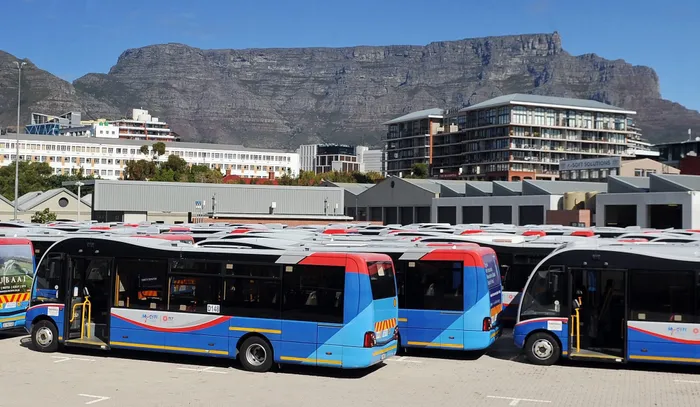At a Glance
- Cape Town’s MyCiTi BRT sets the African standard for sustainable, smart urban transport.
- Nairobi embraces e-mobility with electric buses and modern commuter rail upgrades.
- Addis Ababa’s Light Rail leads Africa’s clean, high-capacity transit transformation.
Efficient, affordable, and safe public transportation systems are vital for vibrant urban life. Whether commuting to work, exploring a city, or simply running errands, a reliable transit network transforms daily experiences.
Africa is fast embracing this trend, with several cities leading the way in modernizing their public transport infrastructure. Here’s a look at the top five African cities setting new standards in urban mobility.
Cape Town sets the pace with world-class BRT system
Cape Town, South Africa’s tourism and legislative hub, continues to lead Africa’s public transport evolution through its MyCiTi Bus Rapid Transit (BRT) network.
Launched in 2011, the award-winning system offers reliable, cashless, and environmentally friendly mobility, linking the central business district to the airport and outer suburbs.
Integrated with non-motorized transport infrastructure such as bike lanes and walkways, MyCiTi reflects a sustainable transport model aligned with South Africa’s urban development goals.
With ridership on the rise, the city is viewed as a benchmark for smart city transport solutions in Africa.
Nairobi embraces E-mobility and BRT corridors
In East Africa, Nairobi’s commuter landscape is undergoing a dramatic transformation. The revamped Nairobi Commuter Rail—modernized through Chinese investment—and the rollout of electric buses reflect Kenya’s pivot toward green urban mobility.
With the Nairobi Metropolitan Area Transport Authority (NaMATA) spearheading the city’s BRT development, mobile-ticketing platforms and dedicated bus lanes are boosting efficiency in one of Africa’s most congested capitals.
These initiatives align with Kenya’s infrastructure push to position Nairobi as a tech-enabled transport hub in the region.
Addis Ababa pioneers light rail transit in Africa
Home to the African Union headquarters, Ethiopia’s capital is a transit trailblazer. Addis Ababa Light Rail Transit (AALRT)—the first of its kind on the continent—has revolutionized public commuting since 2015.
Spanning 31 kilometers with east-west and north-south lines, the network carries over 120,000 passengers daily.
Supported by affordable fares and consistent scheduling, AALRT has significantly reduced reliance on informal minibuses and contributed to the city’s clean energy transition.
Cairo expands the largest metro network in Africa
As Africa’s most populous city, Cairo’s metro system is a cornerstone of Egypt’s transport framework.
With three operational lines and two monorail projects under development, Cairo is investing heavily in high-capacity transit solutions to meet growing demand.
Backed by Egypt Vision 2030, the government has introduced digitized ticketing systems and partnered with global firms to modernize its fleet.
These efforts support low-emission transport infrastructure and improved commuter experiences.
Kigali leads with clean, tech-enabled bus services
Often hailed as Africa’s cleanest city, Kigali’s public transport system is a model of efficiency. Operated by regulated companies like Royal Express, the city’s buses offer free Wi-Fi, GPS tracking, and contactless smart card payments.
Kigali’s data-driven transport policies and strong regulatory framework have made it a rising star in urban mobility innovation, attracting attention from international development partners.
From smart BRT networks to pioneering light rail systems, African cities are investing in scalable, climate-resilient transport infrastructure.
These urban centers are not only reshaping mobility—they’re reshaping the narrative around African innovation and infrastructure development.





